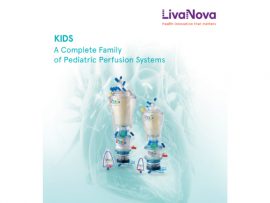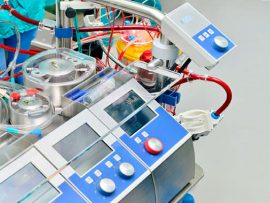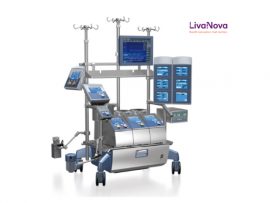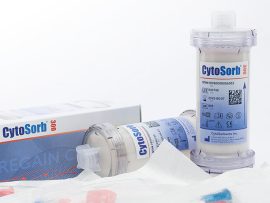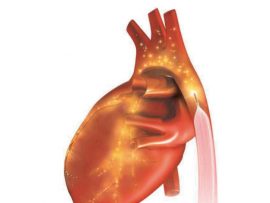Abstract Objectives Clarify the prognostic value of the Johns Hopkins Hospital Nutrition Support (JHHNS) score on clinical outcomes in older patients undergoing with (CPB). Design A retrospective observational study. Setting A teaching..
Read MoreAbstract Introduction: Tracheal intubation is used for most operations under general anesthesia. Prolonged hyperinflation of the tube cuff can compromise tracheal mucosal perfusion, and low pressure of the cuff may cause..
Read MoreAbstract Vascular endothelial damage may activate hypercoagulation and contribute to the development of acute kidney injury (AKI). This study aimed to investigate whether early alteration in coagulation was associated with..
Read MoreAbstract Introduction: The aim of this study was to determine the effect of fresh frozen plasma (FFP) for priming of cardiopulmonary bypass (CPB) circuit on rotational thromboelastometry (ROTEM) and transfusion in..
Read MoreAbstract OBJECTIVES Core temperature monitoring is critical during cardiopulmonary bypass (CPB). In this prospective observational study, we investigated the performance of the transoesophageal echocardiography (TOE) probe for core (oesophageal) temperature..
Read MoreAbstract This literature review examines perfusion safety in cardiothoracic surgery, with a primary focus on cardiopulmonary bypass (CPB) and circulatory devices. PRISMA guidelines were followed and various databases, including PubMed,..
Read MoreAbstract Background Cardiopulmonary bypass (CPB) causes coagulation disorders after surgery. This study aimed to compare the coagulation parameters after congenital cardiac surgery with miniaturised CPB (MCPB) versus conventional CPB (CCPB)...
Read MoreAbstract Introduction Perioperative coagulopathy is common in patients undergoing aortic surgery, increasing the risk of excessive blood loss and subsequent allogeneic transfusion. Blood conservation has become a vital part of cardiovascular..
Read MoreAbstract Background Pediatric cardiac surgery is associated with abnormal coagulation, bleeding, and nearly ubiquitous transfusions. With the popularization of patient blood management, attempts are being made to decrease liberal transfusions..
Read MoreAbstract Background Extracorporeal life support (ECLS) has extensive applications in managing patients with acute cardiac and pulmonary failure. Two primary modalities of ECLS, cardiopulmonary bypass (CPB) and extracorporeal membrane oxygenation..
Read MoreAbstract In this prospective observational study, we investigated whether congenital heart disease (CHD) affects the microcirculation and whether the microcirculation is altered following cardiac surgery with cardiopulmonary bypass (CPB). Thirty-eight..
Read MoreAbstract Cardiopulmonary bypass (CPB) is frequently used for open heart surgery and other procedures that utilize temporary substitution or support of heart and lung function. While it is widely accepted..
Read MoreAbstract Beside the tremendous developments in cardiac surgical procedures, the use of cardiopulmonary bypass (CPB) remains the gold standard to perform cardiac surgery but is associated with detrimental effects (e.g...
Read MoreAbstract Heparin-induced thrombocytopenia (HIT) is a major issue in cardiac surgery requiring cardiopulmonary bypass (CPB). HIT represents a severe adverse drug reaction after heparin administration. It consists of immune-mediated thrombocytopenia..
Read MoreAbstract Background A multidisciplinary Quality Assurance/Performance Improvement study to identify the incidence of “heparin rebound” in our adult cardiac surgical population instead detected a thromboelastometry pattern suggestive of initial protamine..
Read MoreAbstract Background Myocardial injury-related cardiogenic shock (MICS) is significantly associated with poor outcomes in patients after cardiac surgery. Herein, we aimed to investigate the risk factor for postoperative MICS. Methods..
Read MoreAbstract Replantation of amputated limbs after long ischemic hours almost always comes with reperfusion syndrome and poor outcomes. An ischemic time of greater than 6 h is often considered unsuitable for..
Read MoreAbstract Background Oxylipins, the oxidative metabolites of polyunsaturated fatty acids (PUFAs), serve as key mediators of oxidative stress, inflammatory responses, and vasoactive reactions in vivo. Our previous work has established..
Read MoreAbstract Objectives Viscoelastic assays, such as rotational (ROTEM), are used increasingly in cardiac surgery to guide transfusion decisions. After separation from (CPB), achieving rapidly is the main goal before chest closure. The authors hypothesized..
Read MoreAbstract Introduction: The use of cardiopulmonary bypass (CBP; also known as a heart-lung machine) in newborns with complex congenital heart defects may result in brain damage. Magnetic resonance imaging (MRI) assessments..
Read MoreAbstract Pathophysiology There are two types of HIT, depending on the absence or presence of an immune mediation. Type 1 is a non-immune-mediated direct activation of platelets by heparin that..
Read MoreAbstract Background The aim of this retrospective observational study was to explore the early predictive parameters for maximum amplitude in the kaolin with heparinase (HKH) assay (MAHKH) of TEG6s Platelet Mapping..
Read MoreAbstract Introduction Cytokine adsorption using the CytoSorb® adsorber has been proposed in various clinical settings including sepsis, ARDS, hyperinflammatory syndromes, cardiac surgery or recovery after cardiac arrest. The aim of..
Read MoreAbstract Cardiac surgery on cardiopulmonary bypass (CPB) is associated with postoperative renal dysfunction, one of the most common complications of this surgical cohort. Acute kidney injury (AKI) is associated with..
Read MoreAbstract Over a million cardiac operations are performed annually. Most surgeries use cardiopulmonary bypass (CPB) to operate on a non-beating heart in a bloodless environment while maintaining systemic perfusion and..
Read MoreAbstract Background: Cell-derived microparticles (MPs) as membrane vesicles are procoagulant. They play a role in surgical hemostasis. In this study, the correlations between the circulating level of cell-derived MPs and..
Read MoreAbstract Background Selective antegrade cerebral perfusion (SACP) is adopted as an alternative to deep hypothermic circulatory arrest (DHCA) during aortic arch surgery. However, there is still no preclinical evidence to..
Read MoreAbstract Objective Our aim was to analyse whether prophylactic preoperative intraaortic balloon pump (IABP) improves outcomes in hemodynamically stable patients with low (LVEF ≤30%) undergoing elective (CABG) using (CPB). Secondary aim was to..
Read MoreAbstract Background Current guidelines recommend enteral nutrition (EN) should be implemented as early as possible in patients after cardiopulmonary bypass (CPB), but the optimal time to initiate EN is still..
Read MoreAbstract Background Nontechnical skills are critical in cardiac surgery but currently there is no formal paradigm to teach these in residency training. We investigated the use of the Nontechnical skills..
Read More



